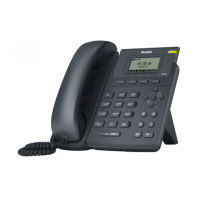Configuring Audio Features
803
The Opus codec supports various audio bandwidths, defined as follows:
Note
The following table summarizes the supported audio codecs on IP phones:
Note
The network bandwidth necessary to send the encoded audio is typically 5~10% higher than the
bit rate due to packetization overhead. For example, a two-way G.722 audio call at 64 Kbps
consumes about 135 Kbps of network bandwidth.
The SIP-T40P/T40G/T23P/T23G/T21(P) E2/T19(P) E2 IP phones support using WB for opus
encoding; and using NB, MB, WB, SWB and FB for opus decoding.

